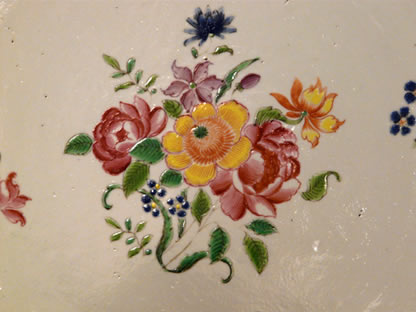The pieces of the collection represent a range of forms, countries, historical periods, and patterns. Although there is a range and variety of pieces, several trends present themselves. The largest portion of the collection originated in China during the Qing dynasty. The earliest piece of Qing dynasty porcelain in the collection dates from the 18th century. The latest product of Chinese porcelain here dates from the early 20th century. A smaller portion of the collection comes from late 19th– to 20th century Japan.
Porcelain forms were decorated in a variety of patterns and pattern variations. Four of the many decoration patterns are represented here: Rose Medallion, Rose Mandarin, Canton, and Fitzhugh. The Rose Medallion pattern consists of four alternating panels around a central gold circle, or medallion, that encloses a bird and a tree-peony, the rose of China. Of all the patterns, Rose Medallion has the largest number of variations. If the panels contain people and flowers, and there is no alternation, the pattern is Rose Mandarin. A wide gold edge is a telling feature of the Canton pattern. The Fitzhugh pattern, one of the most successful standard Chinese patterns, consists of four clusters of vegetation spaced evenly around a central circular design.
